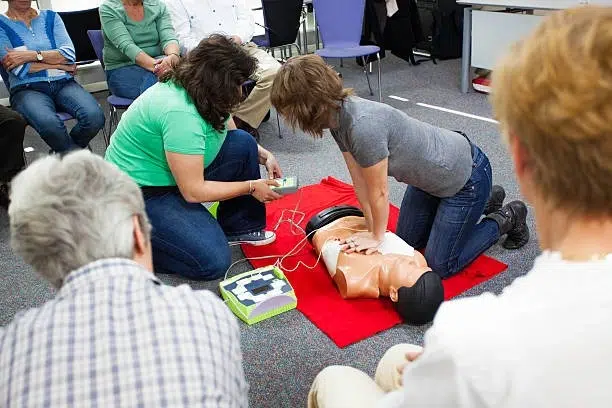
In the critical moments following a Sudden Cardiac Arrest (SCA), a device called an Automated External Defibrillator (AED) can mean the difference between life and death. These portable medical devices analyze heart rhythm and deliver an electrical shock, if necessary, to restore a normal rhythm. But a crucial component within an AED is its monitor – the silent hero guiding its actions. This article delves into the different Types of AED Monitors and how they work in saving lives.
An AED is designed for use by bystanders with minimal medical training. Its user-friendly interface provides clear instructions throughout the resuscitation process. However, the critical decision of whether to deliver a shock rests on the analysis of the victim’s heart rhythm. This analysis is performed by the AED’s monitor, a sophisticated piece of technology disguised in its simplicity.
Here’s a breakdown of the AED’s functionality to illustrate the monitor’s role:
Throughout this process, the AED monitor plays a central role in guiding the user and ensuring safe and effective defibrillation.
While the core function remains the same – analyzing heart rhythm – AED monitors can be categorized into two main types:
The choice of AED monitor type depends on the intended use environment.
Some advanced AEDs may incorporate additional monitoring features beyond basic rhythm analysis. These features can include:
These additional features, while not essential for core AED functionality, can enhance the effectiveness of resuscitation efforts and provide valuable information for post-event analysis.
AED monitor technology is constantly evolving to improve accuracy, user-friendliness, and overall effectiveness. Here are some key trends:
Both ECG and algorithmic monitors offer distinct advantages in specific situations:
When selecting AEDs for training purposes, factors like the intended audience and training objectives need to be considered.
Regardless of the monitor type, regular maintenance is crucial to ensure optimal AED performance. This includes:
Understanding the different Types of AED Monitors is essential for their effective deployment and utilization. ECG monitors provide detailed information for medical professionals, while algorithmic monitors offer user-friendly operation for public access. Both play a critical role in the fight against sudden cardiac arrest. As technology advances, AED monitors will continue to evolve, offering even greater accuracy, user-friendliness, and valuable data for improved cardiac care.
Remember: Early defibrillation is a critical factor in improving survival rates after SCA. If you encounter someone experiencing SCA, call emergency services immediately and utilize a nearby AED if available. Even bystanders with minimal training can make a life-saving difference with the help of an AED.